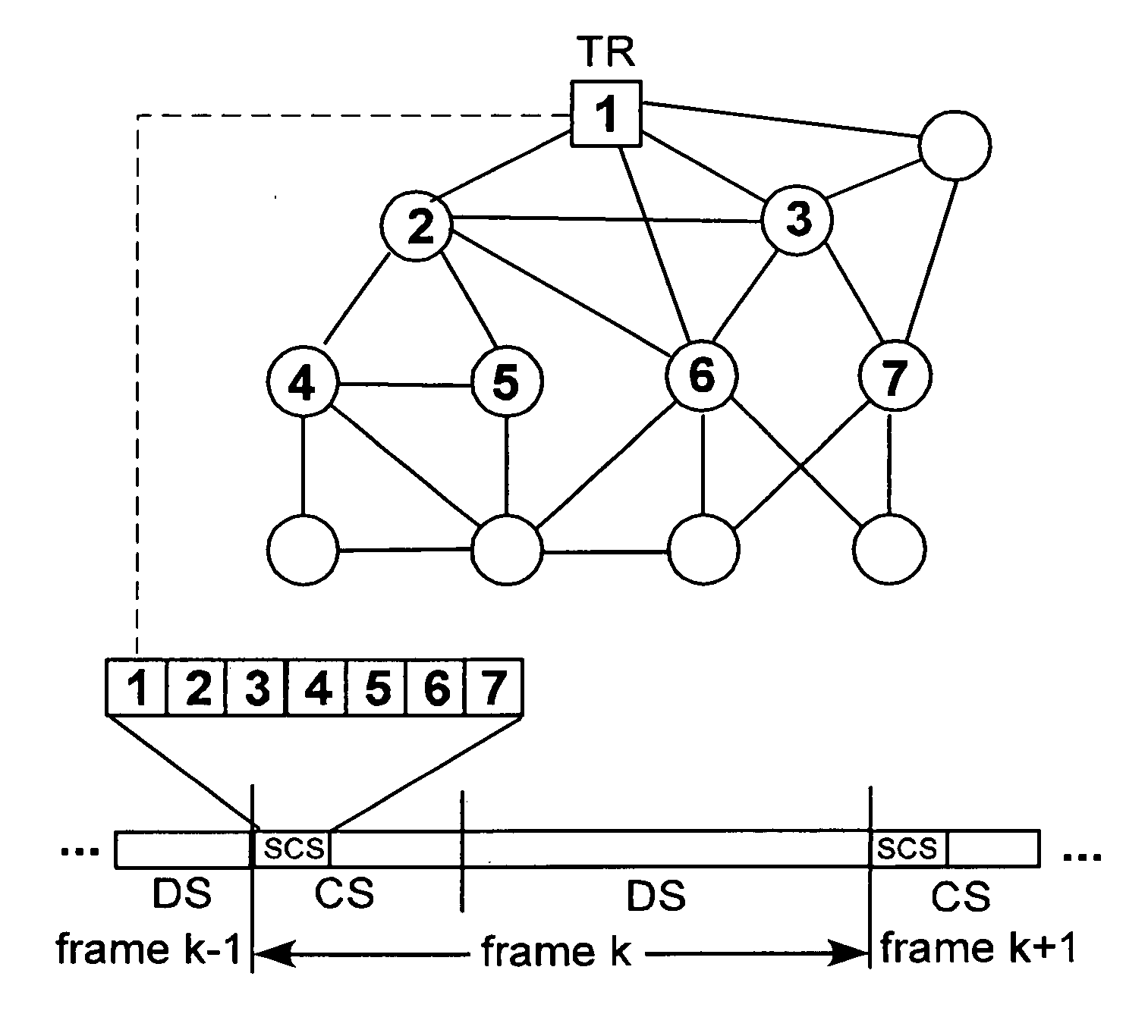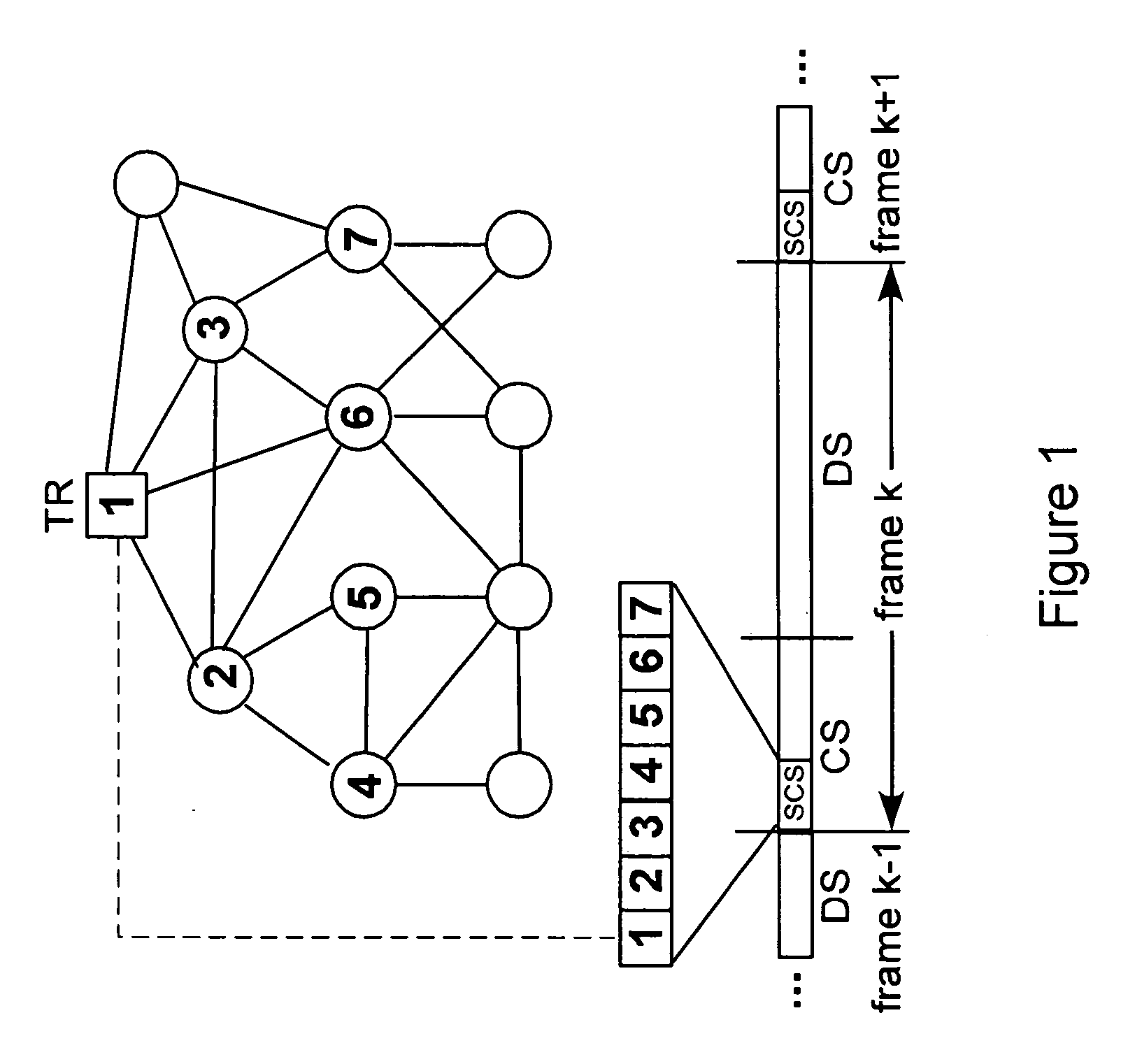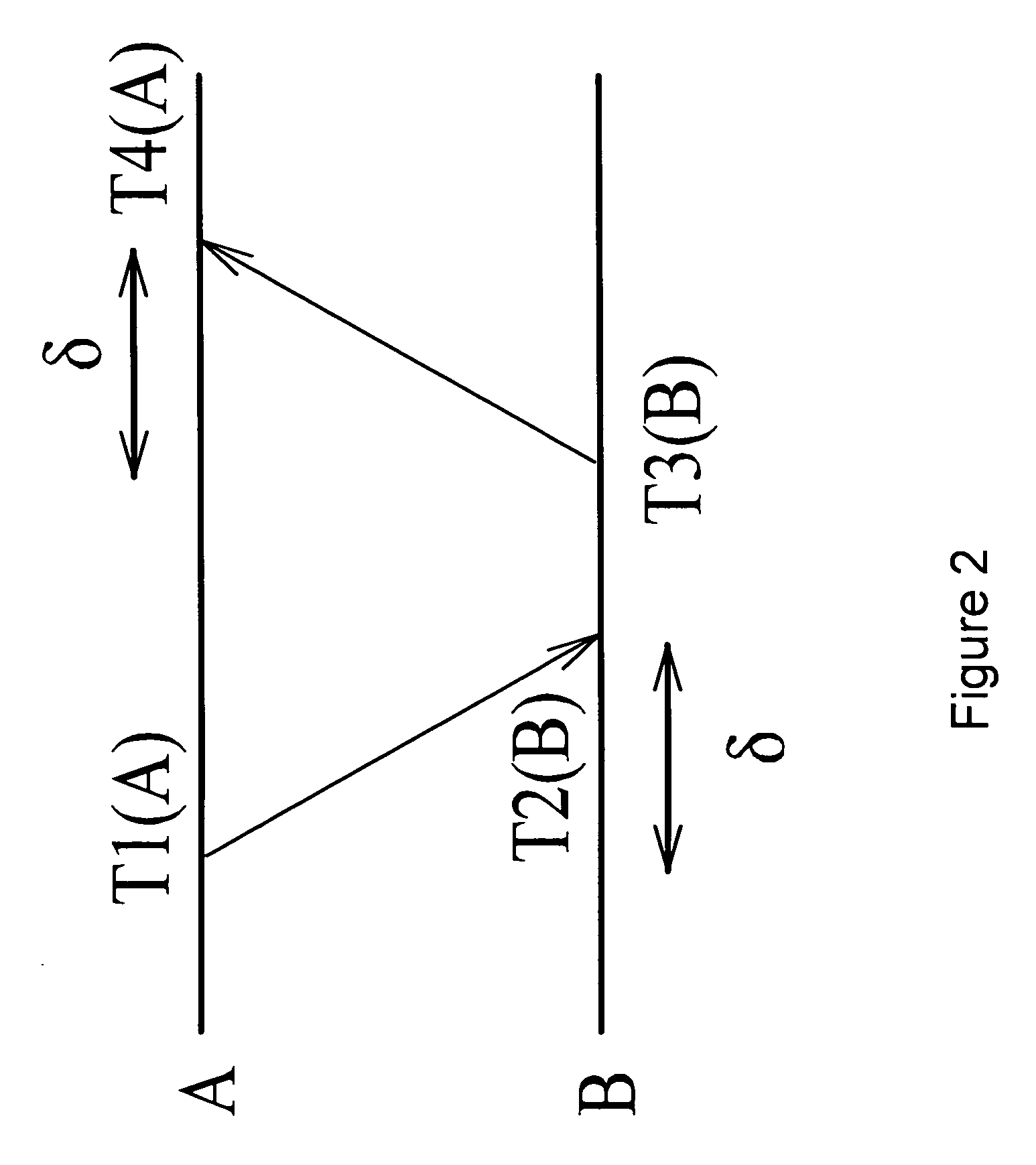Method and device for time synchronization in a TDMA multi-hop wireless network
a multi-hop wireless and time synchronization technology, applied in the field of communication networks, can solve the problems of inability to minimize or limit overhead, no existing algorithm can solve this problem, and most of the proposed mechanisms have never been implemented and tested in a multi-hop wireless environmen
- Summary
- Abstract
- Description
- Claims
- Application Information
AI Technical Summary
Benefits of technology
Problems solved by technology
Method used
Image
Examples
Embodiment Construction
[0071]The method according to the invention can for instance be used in a multi-hop wireless network consisting of N nodes. In an embodiment, some of these nodes are time reference (TR) nodes. TR nodes are synchronized to a common time reference through an out-of band synchronization mechanism such as GPS (Global Positioning System) devices and atomic clocks. The aim of the synchronization algorithm in the present invention is to keep the clocks of all nodes in the network synchronized to the time reference of the TR nodes. The algorithm utilizes the TDMA protocol slotted structure to achieve accurate synchronization and minimize the communication overhead. It takes place during the Synchronization Control Sub-frame (SCS) which is part of the control sub-frame. The main idea is for the TR nodes to trigger synchronization by transmitting a broadcast beacon at the first slot of the SCS and have the rest of the nodes quickly propagate this beacon to the network while they update their ...
PUM
 Login to View More
Login to View More Abstract
Description
Claims
Application Information
 Login to View More
Login to View More - R&D
- Intellectual Property
- Life Sciences
- Materials
- Tech Scout
- Unparalleled Data Quality
- Higher Quality Content
- 60% Fewer Hallucinations
Browse by: Latest US Patents, China's latest patents, Technical Efficacy Thesaurus, Application Domain, Technology Topic, Popular Technical Reports.
© 2025 PatSnap. All rights reserved.Legal|Privacy policy|Modern Slavery Act Transparency Statement|Sitemap|About US| Contact US: help@patsnap.com



